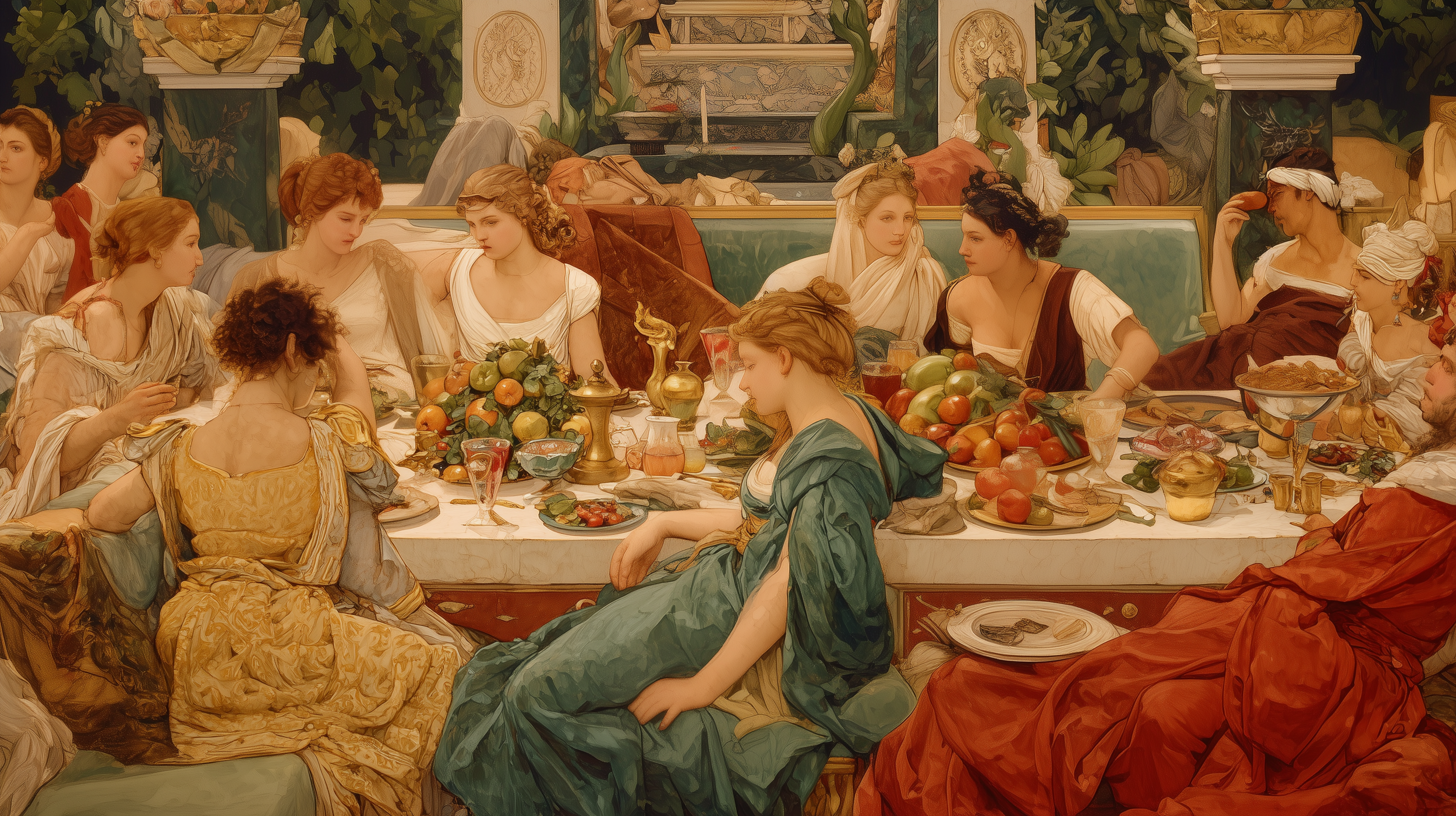Sweet Alchemy: The Origins of Dessert in Ancient Cultures
Sweet Alchemy: A Brief History of Dessert in Ancient Civilizations
Long before dessert was a course on the menu, it was an offering to the gods.
The origins of dessert trace back thousands of years. Not to Michelin-starred kitchens or modern bakeries, but to temples, royal banquets, and sacred rituals. In a world without refined sugar or refrigeration, sweetness was rare, precious, and often divine. Today, we spoon through pudding and cake without a second thought, but in ancient cultures, dessert was a luxury and a language.
This is the story of how ancient civilizations created the first desserts, and how those flavors still echo in the sweets we love today.
🍯 Egypt: Honey and the First Sweet Offerings
In ancient Egypt, dessert was more than indulgence, it was a spiritual endeavor. Honey, the primary sweetener, was considered a gift from the gods. Egyptians used it to preserve fruits, sweeten bread, and embalm the dead.
Tombs of pharaohs were often buried with honey cakes that were dense, spiced breads sweetened with dates, figs, or honey, made to nourish the soul in the afterlife. Some of the earliest forms of candy were also born here: ground nuts or seeds pressed with honey into chewy clusters.
To the Egyptians, sweetness was sacred. In fact, the hieroglyph for honey was often used interchangeably with pleasure or abundance.
🥛 India: Sugar, Milk, and Sacred Sweets
India’s ancient dessert traditions go back to the Vedic period (1500 BCE), where early forms of sugar were first refined from sugarcane. Unlike other regions, India cracked the code on producing crystallized sugar known then as khanda, the root of the English word “candy.”
These early sugar granules were mixed with milk, rice, ghee, and cardamom to create the first kheer (rice pudding), a dish still enjoyed across India today. Many Indian sweets (mithai) were invented not just for flavor, but for rituals, festivals, and temple offerings.
Some believe that dessert in India wasn’t just a treat it was a moral act. Sweetness was a symbol of harmony, shared during weddings, victories, or births.
🍇 Greece and Rome: Fruits, Cheese, and the Origins of Cheesecake
To the Greeks and Romans, dessert was a part of the banquet, not a separate course. Fruits, especially grapes, figs, and pomegranates were served at the end of a meal, often with soft cheeses and honey.
But the tantalizing treat? Cheesecake.
The earliest form of it was called plakous, a baked mixture of wheat, cheese, and honey. It was the Romans that adopted it and spread variations across their empire. These early cheesecakes weren’t as creamy as the New York version but the lineage is there, passed through centuries of evolution.
Sweet wines and spiced cakes also began to surface in Roman feasts. One famous recipe from the Roman gourmand Apicius includes a dessert made from eggs, honey, pepper, and milk (an ancestor to modern custards).
🥜 Persia and the Middle East: Sugarcraft and Celebration
While Egypt relied on honey, Persia (modern-day Iran) became one of the first civilizations to master sugar as an art. By 500 CE, Persians were refining sugar from cane and using it to create halwa, syrups, and even early forms of candy.
Persian sweets were both luxurious and political. Poets wrote about rosewater-scented pastries as symbols of love and fleeting beauty. Lavish sweets were prepared for royal weddings and religious holidays.
These flavors: pistachio, saffron, cardamom, rose are still used for flavor in Middle Eastern desserts today.
🧁 From Ancient Kitchens to Modern Mixes
Across cultures, dessert was never just about sugar. It was about meaning ritual, generosity, celebration, and memory. Even today, you’ll find echoes of these ancient sweets in your kitchen.
At Arts N’ Blends, we try to honor those timeless flavors with desserts that blend old-world inspiration and easy modern preparation. Our Toasted Coconut Dessert Mix, for example, channels that ancient desire for sweetness with a tropical twist, ready in minutes but rooted in centuries of craving.
Whether you’re scooping into a modern cheesecake or dusting cinnamon on your pudding, you’re tasting history.


